Twisting barbed wire fence installed by Didier Faustino at Cincinnati's Contemporary Arts Center
A twisting chain-link and barbed-wire fence installed by French artist and architect Didier Faustino at an exhibition in Cincinnati determines the path taken by visitors through the gallery space.
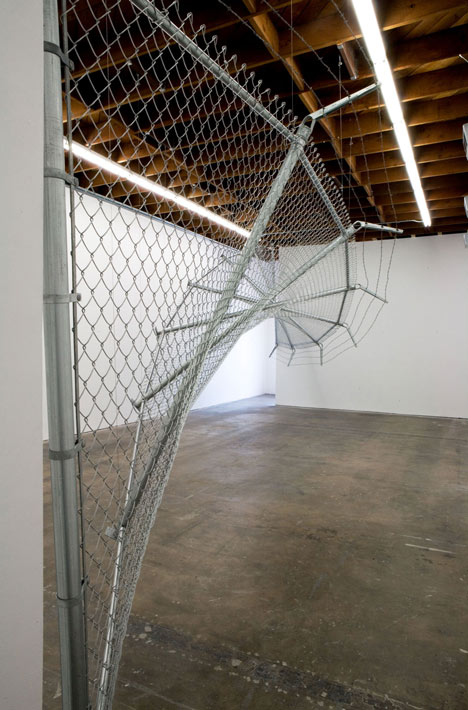
Faustino's installation is called Point Break and creates a barrier running diagonally across one of the galleries at Cincinnati's Contemporary Arts Center.
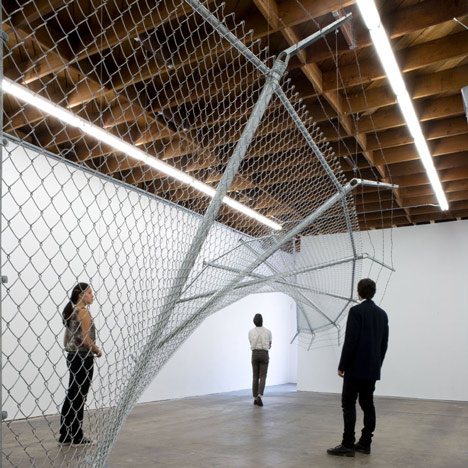
Made from a material commonly used to define international borders and property limits within urban environments, the fence is edge with barbed wire to create a feeling of danger that evokes the risks involved in illegal immigration.
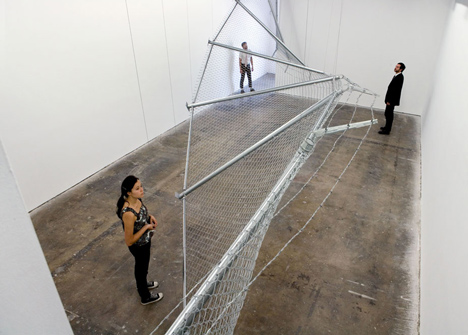
"When you cross borders there is always this feeling of guilt, where you feel afraid and in danger, and for me the idea of the piece is to recreate this feeling inside the gallery," Faustino told Dezeen.
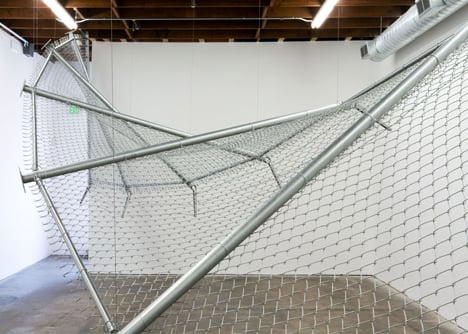
As it bisects the space the fence rotates 180 degrees and rises above the ground to define a passage that visitors follow to cross from the entrance to the exit.
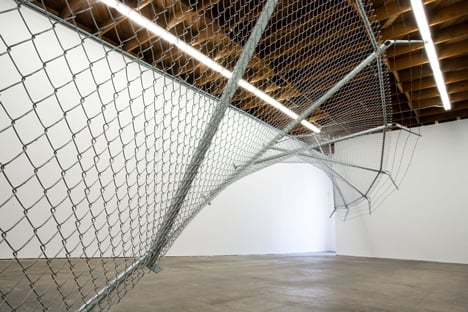
The title of the work refers to the 1991 movie starring Patrick Swayze as an anarchic bank-robbing surfer.
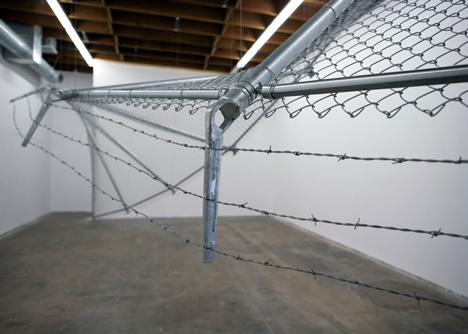
The spiralling form of the fence resembles the tunnel created beneath a breaking wave.
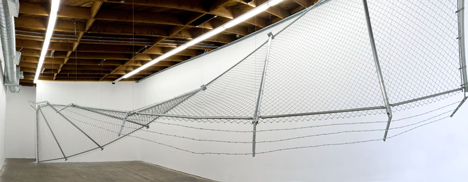
The Point Break installation is an evolution of a previous work that Faustino created for experimental New York exhibition space Storefront for Art and Architecture in 2008.

The original version was called (G)host in the (S)hell and transformed the front of the urban gallery by weaving a fence through openings in the facade.
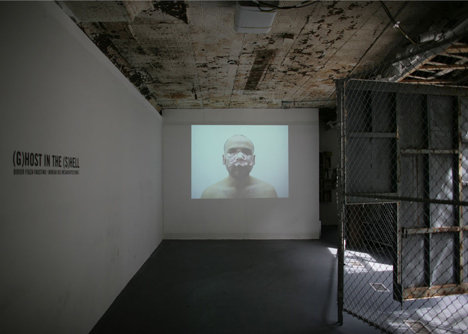
Point Break is part of a group exhibition called Buildering: Misbehaving the City, which features work by 27 artists who explore the idea of creative misuse of buildings and urban spaces.
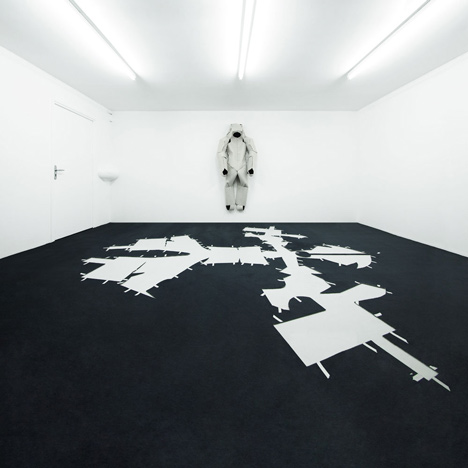
In another gallery, Faustino has installed a version of his Home Suit Home artwork comprising a hollow suit made from standard carpet, which was previously exhibited at Galerie Michel Rein in Paris. For the Cincinnati exhibition, Faustino covered the gallery floor in carpet from which the net shape used to create the suit was cut in one piece and folded into shape.
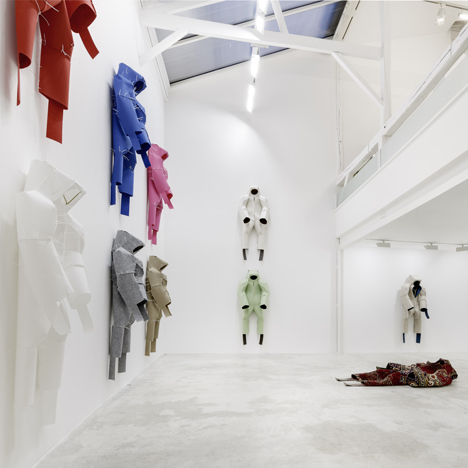
"When carpet - this basic material of architecture - is transformed into the Home Suit Home it becomes a kind of protective element like a real home," explained Faustino.
Both pieces are part of Fautino's continuing experiments into the relationship between the body and architecture, which he says are "about experiencing fragility, provoking instability in space and showing how architecture creates a shelter that protects the body at its centre."
Photography of the Point Break exhibition is by Kelly Barrie.
Here's some more information from the artist:
Didier Faustino: "Buildering: Misbehaving the City" at Contemporary Arts Center, Cincinnati
At the heart of the exhibition 'Buildering: Misbehaving the City' at the Contemporary Arts Center in Cincinnati, two of Didier Faustino's works help to redefine urban and physical borders, to express his transgressive vision of architecture and the misuse of codes regarding housing, thus exploring limits to physical and psychological freedom.
Crossing the space diagonally, the Point Break installation reflects on the materiality of metal fencing and the use of it in towns and American suburbs. It provides a formal criticism, misappropriating this commonplace material to create a passage. The barriers refer to private property, fundamental in the USA, and the passage that they provide here remains extremely dangerous, requiring visitors to take a physical risk connecting them to illegal immigration and to the notion of border. Changing the exhibition space into an ambiguous territory, Point Break expands as if to delineate space, raising social, political as well as psychological questions.
With Home Suit Home, Didier Faustino invites us to enter a disturbing world, strangely resembling ours but haunted by another 'us' in customised armour in the most banal domestic material. The artwork draws on signs from our familiar environment but endeavours to turn it inside out, literally, like a glove, projecting the visitor into an unstable world. It plays with elements representing hindrance, displacement and inversion and takes on bodily characteristics consisting of poor materials from our standardized homes.
Unusually concerned in front of our apartments and offices that have suddenly become unwelcoming, we are drawn to think about the lives that animate our familiar environments and the fictional borders that claim to separate art from our lives, political decisions from our aesthetic models. Reversibility characterises this installation, where the home is in turns designated like a compartment to be occupied and an impossible destination, where the anthropomorphic figure forms an interior as well as an exterior, a container and contents.
Our housing models, our way of organising and accommodating our bodies, our spectacular buildings, the constraints opposing our flesh are in question here. Didier Faustino’s ploy radicalises the architectural intention, to the point of formulating a resolute criticism of future planning for households.